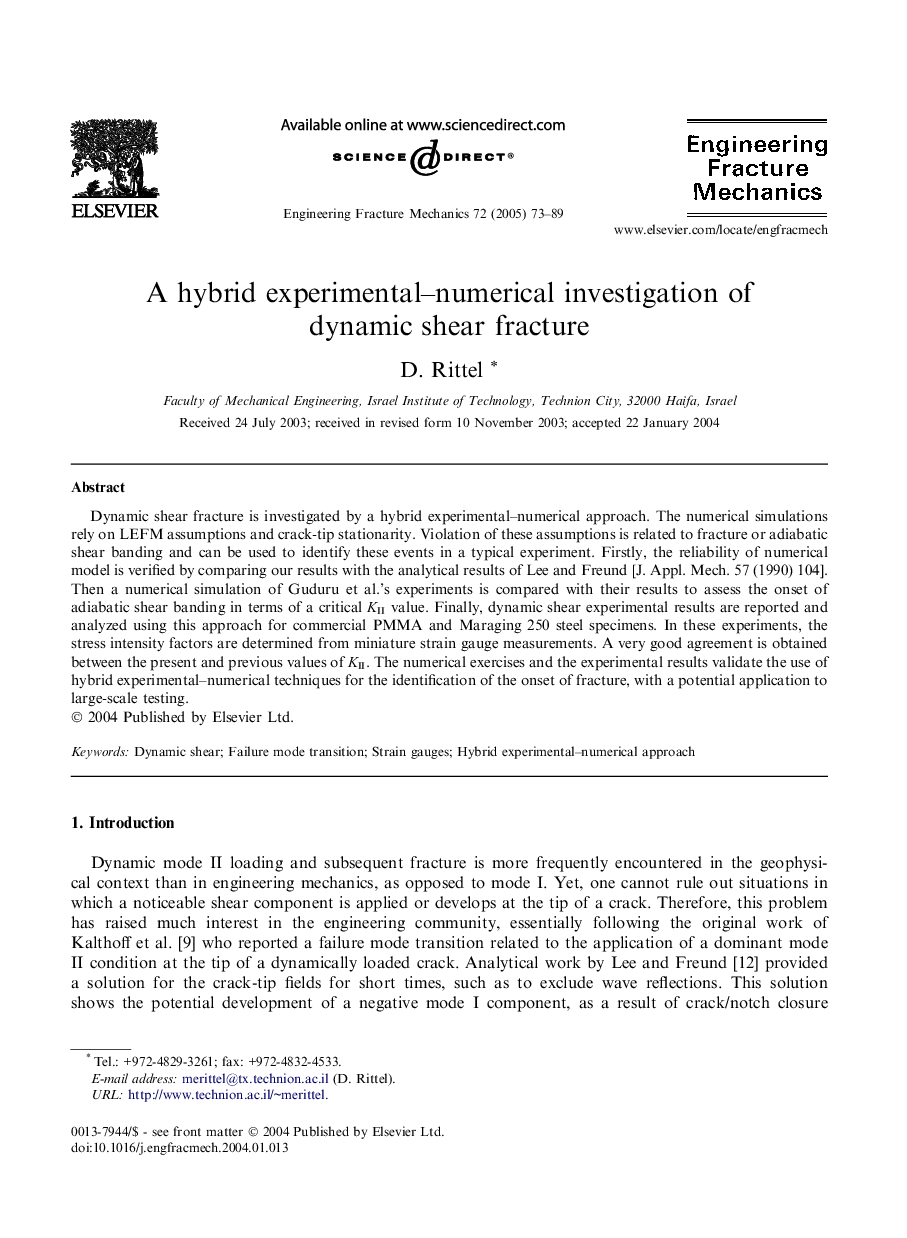| Article ID | Journal | Published Year | Pages | File Type |
|---|---|---|---|---|
| 10416319 | Engineering Fracture Mechanics | 2005 | 17 Pages |
Abstract
Dynamic shear fracture is investigated by a hybrid experimental-numerical approach. The numerical simulations rely on LEFM assumptions and crack-tip stationarity. Violation of these assumptions is related to fracture or adiabatic shear banding and can be used to identify these events in a typical experiment. Firstly, the reliability of numerical model is verified by comparing our results with the analytical results of Lee and Freund [J. Appl. Mech. 57 (1990) 104]. Then a numerical simulation of Guduru et al.'s experiments is compared with their results to assess the onset of adiabatic shear banding in terms of a critical KII value. Finally, dynamic shear experimental results are reported and analyzed using this approach for commercial PMMA and Maraging 250 steel specimens. In these experiments, the stress intensity factors are determined from miniature strain gauge measurements. A very good agreement is obtained between the present and previous values of KII. The numerical exercises and the experimental results validate the use of hybrid experimental-numerical techniques for the identification of the onset of fracture, with a potential application to large-scale testing.
Related Topics
Physical Sciences and Engineering
Engineering
Mechanical Engineering
Authors
D. Rittel,
